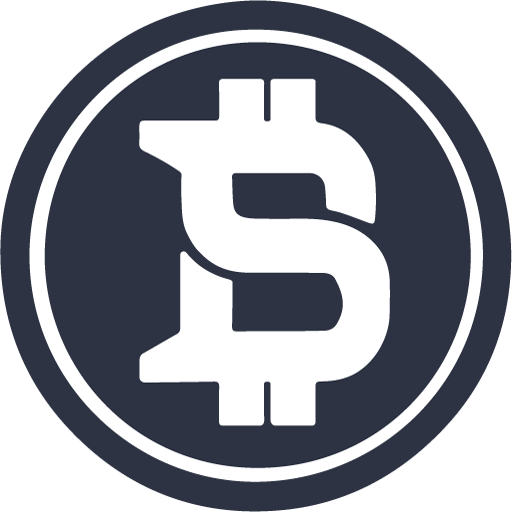Source: Jinshi Data
In a recent article, Nick Timiraos, known as the "Federal Reserve mouthpiece," points out that an unprecedented division is emerging within the central bank during Fed Chairman Jerome Powell's nearly eight-year tenure, casting a shadow over future interest rate cuts.
A rift has emerged among officials, with the debate centered on whether persistent inflation or a weak labor market poses a greater threat. Even the resumption of official economic data releases may not be able to bridge these divisions.
Although investors generally believe that the Federal Reserve is still likely to cut interest rates at its next meeting, this internal division has complicated what seemed like a viable plan less than two months ago.
Eagle and Dove Debate
When policymakers agreed to cut interest rates by 25 basis points in September, 10 out of 19 officials (barely a majority) expected further rate cuts in October and December. This pace of rate cuts across three consecutive meetings would echo the rate cuts Powell made last year and in 2019.
But a group of hawkish officials have questioned the necessity of further rate cuts. Their resistance hardened after officials cut rates again at the end of October, bringing them down to the current range of 3.75% to 4%. According to public commentary and recent interviews, the debate over how to proceed in December has been particularly intense, with hawks strongly opposing previous assumptions of a third rate cut.
Timiraos emphasized that, in fact, a key reason why Powell so bluntly refuted market expectations for another rate cut at that day's press conference was to manage the committee, which was torn apart by seemingly irreconcilable differences.
The government shutdown exacerbated this divide, as it led to a suspension of employment and inflation reports that could help reconcile such disagreements. This data vacuum allowed officials to cite private surveys or anecdotal evidence that could reinforce their earlier assessments.
This dynamic reflects the growing strength of both major camps, while the convictions of the centrists have wavered.
Doves are concerned about a weak labor market but lack new evidence to support a strong case for further rate cuts. Hawks, on the other hand, seized the opportunity to advocate for a pause in rate cuts. They pointed to stable consumer spending and expressed concern that businesses are preparing to pass on tariff-related price increases to consumers.
Whether officials will cut interest rates again at their December 9-10 meeting remains uncertain. New data could bring this debate to a close. Some officials believe the December and January meetings are largely interchangeable, making the year-end deadline seem somewhat contrived. Another possibility is that a December rate cut will be accompanied by guidelines that set higher thresholds for future rate cuts.
Timiraos stated that this divergence stems from the current unusual economic situation: inflation is facing upward pressure, while job growth is stagnating, a condition sometimes referred to as "stagflation." Many economists attribute this to the Trump administration's sweeping policy changes on trade and immigration. KPMG Chief Economist Diane Swonk stated, "It's easier to predict that we'll experience a mild form of stagflation than to actually experience it."
The last official data released before the government shutdown showed that a key inflation indicator for August was 2.9%, not only well above the Federal Reserve's 2% target but also higher than the 2.6% recorded this spring, but lower than the forecasts generated after President Trump raised tariffs earlier this year.
Three key issues
Timiraos emphasized that officials are currently divided on three key issues, each of which will affect the future policy path.
First, will the tariff-driven price increases be a one-off event? Hawks worry that after absorbing the first round of tariffs, companies will pass on more costs next year, thus perpetuating price pressures. Doves, on the other hand, believe that companies have so far been unwilling to pass on too many tariff costs, indicating that demand is too weak to support sustained inflation.
Secondly, is the decline in monthly job growth—from 168,000 in 2024 to an average of only 29,000 in the three months ending in August—due to weak demand for workers or a labor shortage caused by reduced immigration? If the former, maintaining high interest rates carries the risk of recession. If the latter, interest rate cuts may excessively stimulate demand.
Third, are interest rates still within a restrictive range? Hawks believe that after a 50 basis point rate cut this year, interest rates are at or near a neutral level that neither stimulates nor inhibits growth, thus posing a significant risk of further rate cuts. Doves, on the other hand, believe that interest rates remain restrictive, leaving the Federal Reserve room to support the labor market without reigniting inflation.
"People just have different risk tolerance levels," Powell said after the October meeting. "So that's why people have different opinions."
Powell's balancing act
Officials had been debating these issues for months. In his August speech in Jackson Hole, Wyoming, Powell attempted to quell the debate, arguing that the effects of tariffs would be temporary and that the weakness in the labor market reflected insufficient demand, thus siding with the doves who supported interest rate cuts. Data released a few weeks later proved his strategy correct: job growth had virtually stalled.
Nevertheless, the speech was more radical than some of his colleagues could accept. By the time of the October 29 meeting, the hawks had solidified their stance. Kansas City Fed President Schmid voted against the rate cut that month. Regional Fed presidents without voting rights, including Cleveland Fed President Hamack and Dallas Fed President Logan, also quickly and publicly expressed their opposition to the rate cut.
At the press conference following the meeting, Powell went straight to the point without even waiting for reporters to ask questions, stating that a December rate cut was not a certainty.
Powell was fulfilling his duty to ensure that the voices of different factions on the committee were heard. This “committee management” helps to build consensus when action is needed.
Timiraos also pointed to Powell's "policy history." In the past, Powell has encouraged his colleagues to include such clues in policy statements released before the post-meeting press conference. According to meeting minutes released earlier this year, he said at a Fed meeting in July 2019, "Press conferences are the worst time to change policy expectations."
Timiraos added that he faced similar concerns at the time: a hawkish camp resisted rate cuts, and officials worried that investors were too certain about the next move. Powell and his colleagues signaled caution by carefully choosing their words.
But last month, expanding the scope of the statement to reflect hawkish concerns would alienate doves, forcing Powell to deliver the message personally. Powell said, "There's a growing sense that perhaps we should at least 'wait and see' on this issue, and observe a meeting before making a decision."
The shift in the political climate is illustrated by the change in Chicago Fed President Goolsby's stance. In September, he was one of two officials who projected only one rate cut this year, placing him between doves who expected two more cuts and hawks who hoped for no further rate cuts.
While it's reasonable to assume that tariffs will only cause a one-off price increase, hawks worry that experiences from the 1970s or 2021-22 suggest this thinking may be fundamentally flawed. "A three-year period of 'temporary' price increases cannot be considered temporary," Goolsby said in an interview last week.
Differences are hard to resolve
The September inflation data, released days before the October policy decision, was mixed. Overall, the figures were more moderate than expected, as housing costs slowed sharply. However, hawks noted some unsettling details: the core measure, excluding volatile food and energy prices, accelerated its annualized growth rate over the past three months to 3.6% from 2.4% in June. A non-housing services indicator, which shouldn't be directly affected by tariffs, also remained firm. "Inflation is heading in the wrong direction until we see the 'last light' go out," Goolsby said.
As hawkish views have hardened, doves have spoken less publicly, but they haven't abandoned their stance. Among the doves, three officials appointed by Trump stand out, and Trump has made it clear that he wants to lower interest rates.
Former White House advisor and Federal Reserve Governor Milan, who joined the Fed before the September meeting, immediately voted against the cut, advocating for a larger 50-basis-point rate cut. The other two, Governors Bowman and Waller, are among the five final candidates to succeed Powell as Fed Chair next year.
Doves believe the current situation bears little resemblance to 2021-22 and worry that the Federal Reserve will underreact to the labor market slowdown. However, data disruptions are detrimental to them. While alternative employment data are readily available, price information is far more fragmented. Hawks warn that when the Fed emerges from the data fog early next year, it may find inflation running high.
In a paper published Monday, San Francisco Federal Reserve President Mary Daly articulated a dovish view, arguing that slower wage growth means slower job growth reflects declining labor demand, not a lack of supply. She cautioned against stifling a potential productivity boom similar to that of the 1990s by focusing too much on avoiding 1970s-style inflation. She wrote that the economy risks “losing jobs and growth in the process.”
Timiraos concluded that even if the data outage ends, the data to be released soon may not easily resolve these disagreements, as these disagreements often boil down to how seriously to be taken into account risks that may not materialize for months to come.







